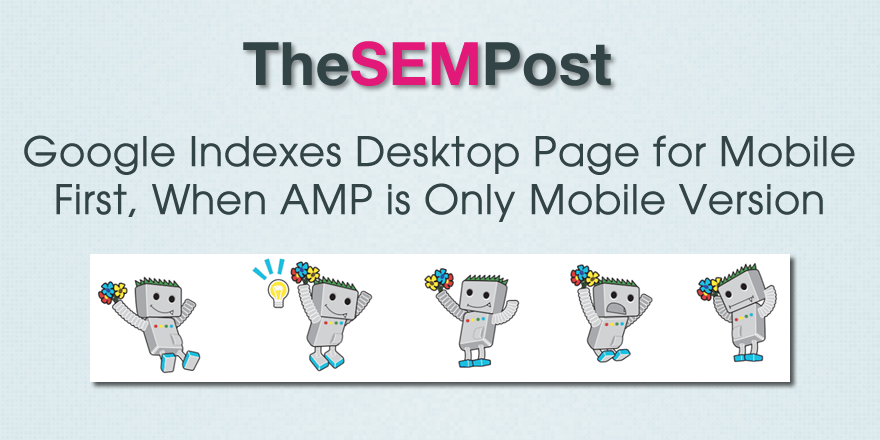 There has been some confusion about how Google’s mobile first indexing change would be affected by sites that have a traditional desktop page, but the only “mobile friendly” page is the AMP version. I asked Maile Ohye from Google about this, and we got some clarification on the issue.
There has been some confusion about how Google’s mobile first indexing change would be affected by sites that have a traditional desktop page, but the only “mobile friendly” page is the AMP version. I asked Maile Ohye from Google about this, and we got some clarification on the issue.
If the only mobile version page that exists is an AMP version, Google will still use the desktop version for indexing, even when Google switches their index over to the mobile first index.
So @maileohye confirmed that in a situation where there is desktop and AMP, Google will index desktop for mobile first. #StateofSearch
— Jennifer Slegg (@jenstar) November 14, 2016
If a site ONLY has an AMP version, such as the AMP Project site, then Google will use the AMP version for indexing. It won’t stop indexing simply because there isn’t a desktop or regular mobile friendly version.
And for sites where there is only an AMP version for mobile friendly, Google will show the AMP version in the mobile search results in place of the desktop. And the AMP version will still get the mobile friendly boost, since it is still a mobile friendly page. But for those sites with a regular mobile version and an AMP version, there is not an additional AMP specific boost, or at least not one that Google has announced. The site would still get the regular mobile friendly boost for being mobile friendly – there is only one boost available for being mobile friendly, regardless of how the site is made mobile.
Since Google announced AMP as part of the ten blue links, some sites have been putting resources into adding AMP to their sites, and using it as the mobile friendly version of the site, either temporarily while creating a regular mobile friendly experience or as the only mobile version site they plan to have. So with the mobile first indexing change, there was some concern about how Google would handle this situation.
We have a FAQ for mobile first that can be found here.